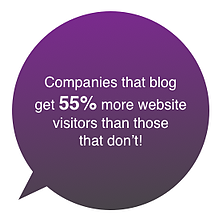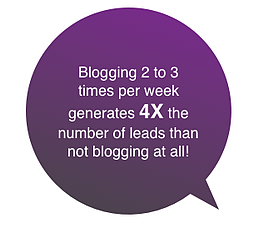.jpg)
Are you an entrepreneur or a small business owner who feels that your beautifully designed website is lost somewhere out in cyberspace not getting the attention it deserves? You are open and ready for business, looking forward to a bright new future, but the only problem is you need customers! Perhaps you've designed a product you know, without a doubt, will revolutionize your industry -- in fact, everyone you know loves it; your peers are jealous they didn't think of it first, your significant other thinks you're brilliant and your younger brother is telling all his friends you rock! Great, but now what? You may be scratching your head and asking yourself how you're going to get customers and make your mark when there's so much competition out there. Talk about pressure. Enter inbound marketing.
What is Inbound Marketing?
In today's fast-paced digital world, old school marketing methods such as cold calling, handing out flyers on the street corner and advertising in the local newspaper just aren't cutting it because, realistically, they just aren't the most effective ways of getting your business noticed. This is where inbound marketing comes in and, specifically, blogging.
Inbound marketing is a term coined by HubSpot founder, Brian Halligan. It is the process of attracting customers to your website by providing them with exceptional content. Traditional or outbound marketing relies on pushing your information onto the customer and hoping they'll bite. As a consumer you know, all too well, how annoying it is to receive spam and other unsolicited marketing materials in your inbox or by way of text messages -- it's never a good idea to annoy potential customers. Inbound Marketing does the opposite -- it pulls the customer to you; you earn their attention by offering them great website content that is relevant to them, informative and educational. And how do you do this? It boils down to blogging and doing it often.
How to Get Your Blog to the First Page


You want to be on that all-important first page -- you want to be recognized as a leader in your industry. Blogging is not the vehicle for letting people know how great your product is, it's about educating the customer with valuable content and by earning their trust. It's about generating traffic to your website via fresh, compelling and effective content that helps build and nurture relationships. You want to turn these potential visitors into new customers by offering them content they'll pay attention to!
1. Blog Frequently
It has been shown that blogging 2 to 3 times per week generates 4 times the number of leads than not posting at all; successful businesses need to blog consistently to see results!
2. Craft A Catchy, Yet Relevant Blog Title
Ultimately it's the title of your blog that is going to ensure that your company gets found and ranked by search engines such as Google, so it's an important piece of advice to ensure you focus almost as much time on creating your blog title, using your carefully selected long-tail keyword strategy, as you do actually writing it.
3. Create Blogs for Your Target Personas
Concentrate on keeping your blogs customer centric, use friendly language and remember to add cool images, infographics and video content to further enhance your visitors' experiences and to encourage them to engage further with you.
4. Include Calls to Action
Every blog post should include a relevant Call to Action button that will drive readers to your landing pages offering them valuable content such as eBooks, white papers, helpful downloads, free demos or consultations. The goal of your Call to Action is to convert a user into a lead and to keep website visitors coming back to your site again and again! Keep in mind that Google loves new content so the more new content you deliver, the faster you'll see SEO (search engine optimization) results!
Entrepreneurs, small-business owners and tech startups get noticed when they blog often, posting compelling content that potential customers will want to share with others.
